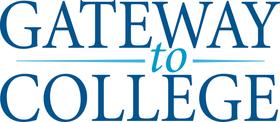In Iowa, more and more high school students are graduating with a significant number of community college credits under their belts. The reason began nearly two decades ago when the state passed legislation that requires high schools to pay for the students that take the courses. Money for tuition ultimately comes from the state, with a portion going to community college tuition and the rest going to high school. The idea behind the legislation, according to the Green Field Reporter, was to provide additional opportunities to advanced high school students without taxing already tight school budgets.
As a result of the new law, more Iowa students began seizing the opportunity to get a leg up on their post-secondary education. According to the Des Moines Register, more than 38,200 high school students across the state earned community college credits before their high school graduation. Those numbers showed a 50 percent increase over a period of five years, according to the Iowa Department of Education. Students who received this credit ahead of time made up more than one-quarter of all the community college students in the state.
The Study Begins
This year, as Iowa’s 15 community colleges are gearing up for accreditation through the National Alliance of Concurrent Enrollment Partnership, a study has been launched to determine the quality of college courses taught at the nearby high schools. This study will provide information on just how valuable community courses during high school can be, and what benefits high school students can gain by starting early on their higher education pathways. Iowa State University is also undertaking a study to determine how the performance of high school students who take community college courses might differ from their peers that stick to high school classes until after graduation.
While the studies are still underway, initial findings indicate that some of the students taking community college courses may not be as prepared for a four-year university after finishing their community college stint as they might think. Wolfman Kliemann, chairman of the math department for Iowa State University, told Green Field Reporter, “These students would fall into the category of ‘there may be problems there.’ My wish is that high schools, as well as community colleges, really educate students very carefully and thoroughly. Students do not have enough of foundations. But they go on and take additional courses for which they are not prepared and, therefore, these courses are not very useful.”
This video offers an overview of how NACEP functions.
Benefits of Community College Classes in High School
Despite these initial reports from the Iowa State study, many students, parents and teachers are seeing the benefits of taking community college courses while still in high school. The article in the Des Moines Register cites some of the following perceived benefits in taking advantage of community college classes at the secondary level:
- Most of the community college courses taken while in high school will transfer to a four-year university, saving even more on tuition costs
- High school courses at the community college level typically offer the same level of difficulty and syllabus as the classes taught on the community college campus
- Students get a taste of what it is like to attend courses at the college level
- The college courses taken in high school usually mean a lighter course load for students once they enter college for the first time
- Early coursework can help students choose a career path, which also saves money in tuition costs because students can choose a major field of study earlier in their college career
- High schools may offer the community college courses free of charge for students that take the classes in tandem with a full high school course load
With many benefits to consider, other community colleges around the country are joining Iowa in offering classes to high school students. Next, we will take a look at one community college that is realizing the benefits of getting high school students interested in the community college curriculum at an early age.
Mt. San Jacinto Community College Expanding High School Offerings
Beginning this fall, Mt. San Jacinto is going to be offering community college course options to even more high schools in the area surrounding the college. According to a report at the Banning-Beaumont Patch, this school is expanding its current Dual Enrollment Program, which serves as an Advanced Placement alternative. The program will soon include Career and Technical Education programs that will offer a second track option to six of the eight high school districts in the vicinity of Mt. San Jacinto. Banning and Beaumont are two of the school districts planning to participate in this new program. Areas of study will include multimedia, child development, and medical assisting.
This video reports on a high school student who earned an Associates degree while in high school.
Tom Spilman, dean of counseling and student services at Mt. San Jacinto Community College, told the Southwest Riverside News Network, “We’re leading the way. Students entering their freshman year will be better prepared for the rigors of college coursework and its cost-effectiveness. Some students are even knocking out a year of college before they even graduate high school.”
Even while the Iowa study is in full swing, community colleges around the country are offering high school students the chance to get a head start on their higher education. With the ability to take college courses and high school classes at the same time, more students are finding they can save time and money when it comes to earning their two or four-year degree.
Questions? Contact us on Facebook. @communitycollegereview














